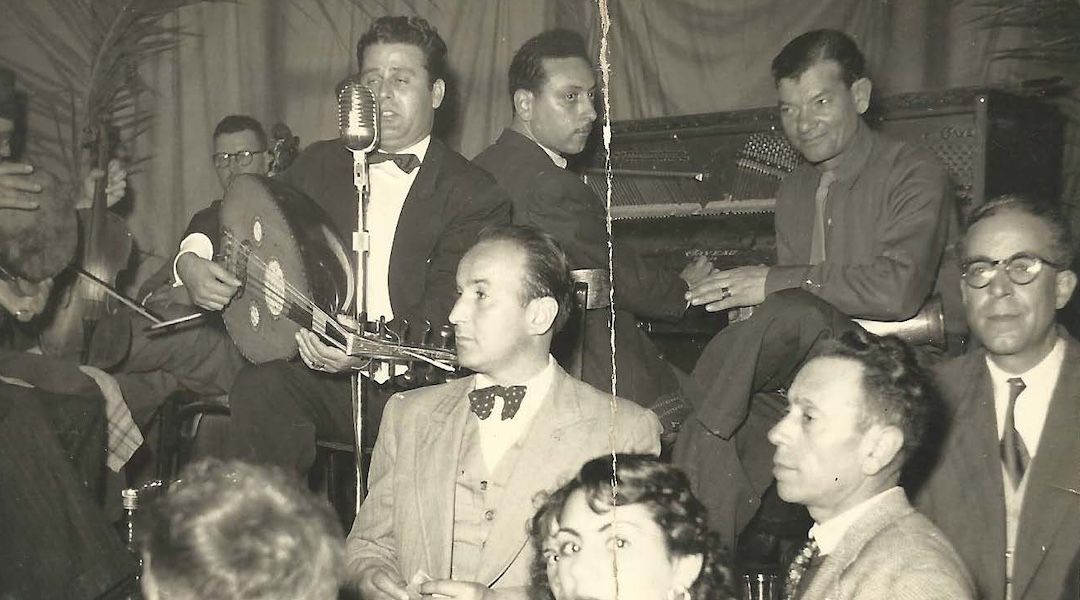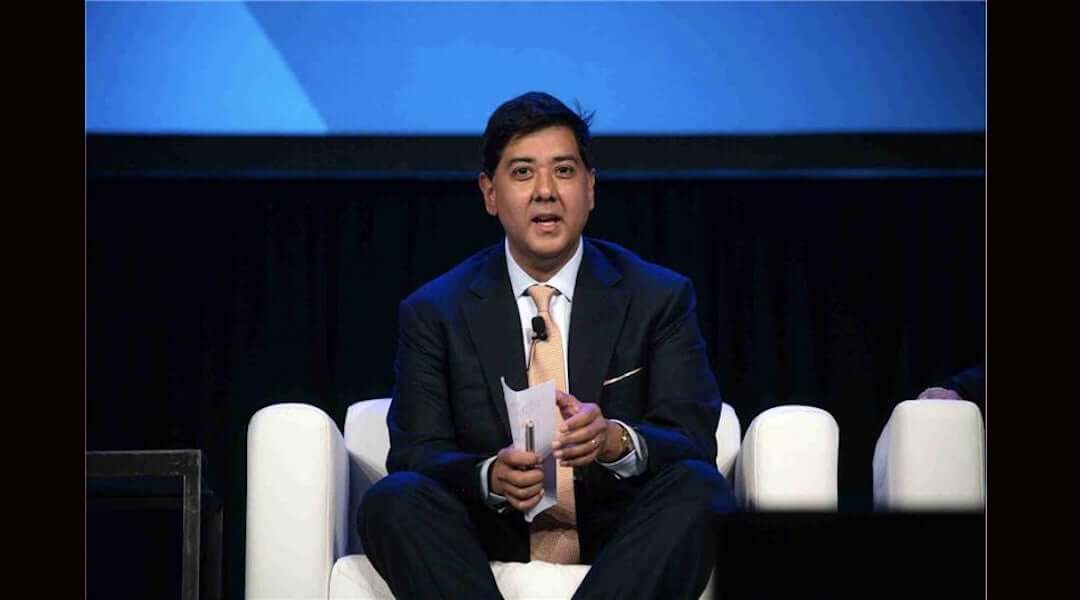Maurice El Medioni, Algerian Jewish pianist revered among Jews and Muslims, dies at 95
The pioneer of the “pianoriental” style remained busy into his ninth decade

Pianist Maurice El Medioni performs at the Barbican in London, June 21, 2008.(Photo by Andy Sheppard/Redferns)
(JTA) — Nearly 70 years ago to the day, an up-and-coming young Algerian Jewish pianist by the name of Maurice El Medioni dashed off a letter to the Moroccan Jewish superstar Samy Elmaghribi in Casablanca.
“I have not forgotten you,” he wrote on March 31, 1954. “If I haven’t written you earlier it is because I have been so busy.” Nonetheless, El Medioni made clear his intention to bring his counterpart to Algiers and Oran to perform in concert.
By April 1955, El Medioni was accompanying Elmaghribi, described by one newspaper as “the greatest Arab attraction of all time,” in Algeria for a series of Ramadan concerts that made a remarkable impression on Jewish and Muslim audiences. In the mid-20th century, North African Jewish musicians continued to set the tone across Morocco, Algeria and Tunisia, including in the midst of wars of liberation.
Until El Medioni’s death March 25 in Israel at the age of 95, the pioneer of the “pianoriental” style and a consummate musical innovator remained nearly as busy as he did decades earlier, albeit in a very different time and place then the one where he first made his mark.
Born in the Jewish quarter of Oran in 1928, El Medioni was heir to an enviable Arab and Andalusian musical pedigree, a lineage which included the 19th-century master musician Ichoua “Maqshish” El Medioni (c. 1826-c. 1899) and Messaoud “Saoud” El Medioni (1886-1943). His father’s brother, known to most as Saoud l’Oranais, was the most significant Algerian performing and recording artists of the turn of the 20th century through the interwar years and a considerable influence on his young nephew who had already taken to the piano as a young boy in the 1930s.
The Second World War had a profound impact on Maurice and his family. Like all Algerian Jews, the El Medionis had their French citizenship removed by the Vichy regime and found themselves subject to anti-Jewish race laws. His famous uncle Saoud, who had established himself in Marseille just before the outbreak of war, was murdered in Sobibor. For Moroccans and Algerians, Operation Torch, the massive American- and British-led landing in North Africa in November 1942, ushered in the end of World War II. It also brought Maurice face-to-face with American servicemen of color who introduced the budding pianist to the world of bebop, boogie-woogie and all rhythms Latin.
Blending sounds east and west on an instrument which favored the latter, Maurice soon positioned himself at the center of postwar nightlife in his native Oran, alongside and in partnership with Muslim musical collaborators like Blaoui Houari. By day he developed his tailoring business; by night he was touring alongside rising stars and veteran acts across North Africa. By 1958, he started appearing on the Arab broadcast of French television in Algeria. His name began to garner regular mention in press outlets.
In 1961, however, as the Algerian War entered its final year and as violence and uncertainty set in, Maurice and his family left their country first for Israel, then for Paris, and eventually for Marseille. In France, the El Medionis joined tens of thousands and then hundreds of thousands of North African Jews and Muslims who established themselves on the northern side of the Mediterranean in the midst of decolonization.
While continuing to earn his living as a tailor, Maurice’s dexterous fingers brought him other kinds of audiences in the North African clubs and cabarets that continued to bring Jews and Muslims despite tensions in the Middle East. Ornamenting the offerings of some of the greatest Moroccan, Algerian and Tunisian vocalists of the era, his most significant and enduring partnership was with the Algerian Jewish chanteuse Line Monty (née Éliane Serfati) beginning in the 1960s and 1970s. Among his many contributions to the ever expanding repertoire known as “francarabe,” was “Ana Ene Hobbek” (“I Love You”), recorded by “the Algerian Edith Piaf” on an eponymous LP released on the Paris-based Dounia label (whose proprietor was the Tunisian Jewish percussionist and impresario El Kahlaoui Tounsi). Like the alternating Arabic and French lyrics in the song, Medioni’s hands spoke their own complimentary languages and drifted between the overlapping worlds he inhabited. Whether on “Ana Ene Hobbek” or his classic “Ahla Ouassahla” (“Welcome”), he created an immersive experience in which his listeners could feel past and present all at once.

El Medioni (at piano, rear) performs with the Moroccan Jewish superstar Samy Elmaghribi (at microphone) in the 1950s. (Courtesy of Maurice El Medioni Family Archive)
Toward the end of the 20th century and beginning of the 21st, documentaries like “Alger-Oran-Paris: les années music-hall” (directed by Michèle Mira Pons, 2005) and “El Gusto” (directed by Safinez Bousbia, 2012) brought El Medioni back into public consciousness although he had never stopped performing. Nor did he stop recording. He featured, for example, on Khaled’s “Ya-Rayi” in 2004. The king of raï and fellow Oran native was apparently nourished on El Medioni’s unique sound despite his Jewish predecessor’s long absence from Algeria.
“Maurice El Médioni Meets Roberto Rodriguez – Descarga Oriental: The New York Sessions,” his 2006 release on Piranha with the percussionist Roberto Rodriguez, led to an international tour which kept the septuagenarian and then octogenarian musician as busy as he was in the 1950s.
In 2006, El Medioni and his wife Juliette (who predeceased him) reestablished themselves in Netanya, Israel. There, he placed a much younger generation of Jewish artists of North African descent next to him on the piano bench and on stage, including the multi-talented Neta Elkayam. The couple had three children.
Over a career which spanned more than 70 years, he rendered new sounds iconic. At every turn and especially during moments of turmoil, he created. He also embraced collaboration. If his vast discography is still being processed, the totality of his impact is certain. Through his piano, El Medioni embodied history, one which stretched to the 19th century and continues to resonate until our times.
Christopher Silver is the Segal Family Assistant Professor of Jewish History and Culture, McGill University and author of Recording History: Jews, Muslims, and Music across Twentieth-Century North Africa (Stanford University Press, 2022).
This article originally appeared on JTA.org.














